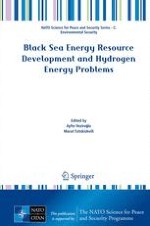2013 | OriginalPaper | Buchkapitel
12. Approaches to Aquatic Ecosystems Organic Energy Assessment and Modelling
verfasst von : Viktor Moshynsky, Olhga Riabova
Erschienen in: Black Sea Energy Resource Development and Hydrogen Energy Problems
Verlag: Springer Netherlands
Aktivieren Sie unsere intelligente Suche, um passende Fachinhalte oder Patente zu finden.
Wählen Sie Textabschnitte aus um mit Künstlicher Intelligenz passenden Patente zu finden. powered by
Markieren Sie Textabschnitte, um KI-gestützt weitere passende Inhalte zu finden. powered by
